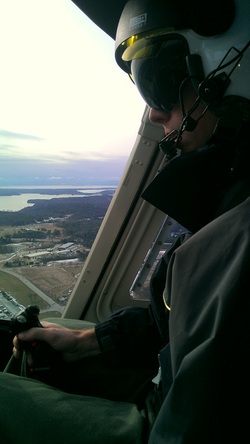Pilot Path - Student to Professional Pilot

Phase One - Enroll in flight school. While enrolled the student will earn their Private, Commercial and Flight Instructor Certificates and log approximately 200 hours of flight time. Most of the training for pilot certificates involves ground classes, studying, knowledge tests, flight training and a flight test with an FAA Designated Pilot Examiner (DPE).
Phase Two - Typically the first job of a newly certificated helicopter pilot is as a flight instructor. In most cases, the pilot remains a flight instructor until gaining a minimum of 1,000 hours flight time. During this phase of a pilot's career, a pilot will gain valuable knowledge and experience training students.
Phase Three - With a 1,000+ flight hours, pilots can expand their job search to areas with numerous commercial helicopter operations. For instance, the Gulf of Mexico (supporting oil and gas exploration), New York City, The Grand Canyon, and Alaska (flying tours) are busy with helicopter operations. If you are willing to relocate and experience all facets of flying, your opportunities will be far more abundant.
Phase Four - With a couple thousand hours of flight time pilots now have enough experience to move into EMS (emergency medical services), fire fighting, ENG (electronic news gathering) and many other jobs.
Keep in mind that these phases of flight vary greatly from person to person. The length of each phase is dependent upon many variables that are determined by each pilot.
Phase Two - Typically the first job of a newly certificated helicopter pilot is as a flight instructor. In most cases, the pilot remains a flight instructor until gaining a minimum of 1,000 hours flight time. During this phase of a pilot's career, a pilot will gain valuable knowledge and experience training students.
Phase Three - With a 1,000+ flight hours, pilots can expand their job search to areas with numerous commercial helicopter operations. For instance, the Gulf of Mexico (supporting oil and gas exploration), New York City, The Grand Canyon, and Alaska (flying tours) are busy with helicopter operations. If you are willing to relocate and experience all facets of flying, your opportunities will be far more abundant.
Phase Four - With a couple thousand hours of flight time pilots now have enough experience to move into EMS (emergency medical services), fire fighting, ENG (electronic news gathering) and many other jobs.
Keep in mind that these phases of flight vary greatly from person to person. The length of each phase is dependent upon many variables that are determined by each pilot.
